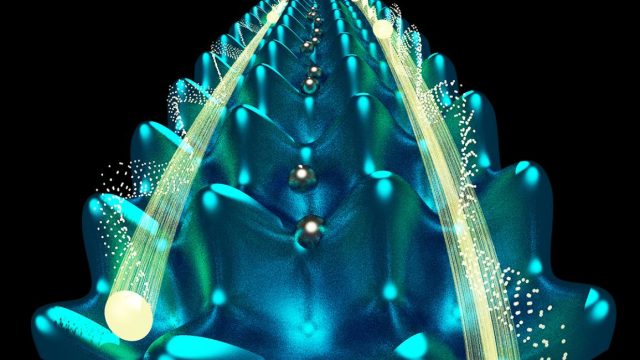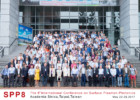Two atoms make quantum memory, processing gate, and test of entanglement

(credit: University of Maryland)
Quantum systems are inherently fragile as any interactions with the outside world can change their state. That makes creating things like quantum memories rather challenging, since it can be hard to know if it actually preserves the information you put into it. To get around this, researchers have been looking into ways of creating error-correcting quantum memory.
Now, researchers have come up with a rather simple scheme for providing quantum error controls: entangle atoms from two different elements so that manipulating won’t affect the second. Not only is this highly effective, the researchers show that they can construct quantum logic gates with the setup. And while they were at it, they demonstrate the quantum nature of entanglement with a precision that’s 40 standard deviations away from classic physical behavior.
People have managed to entangle different types of particles previously. For example, you can entangle an atom and a photon, which allows the photon to transfer information elsewhere—something that’s undoubtedly necessary for a quantum computer.
Read 8 remaining paragraphs | Comments
Ars Technica
Copyright protection for works of art – free consulting, IP Protection of your software
Protection of copyright for any creative works and inventions, patents US. Consulting on all matters of intellectual property rights in the US




